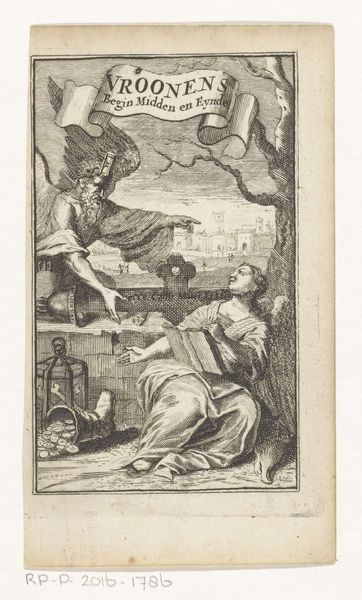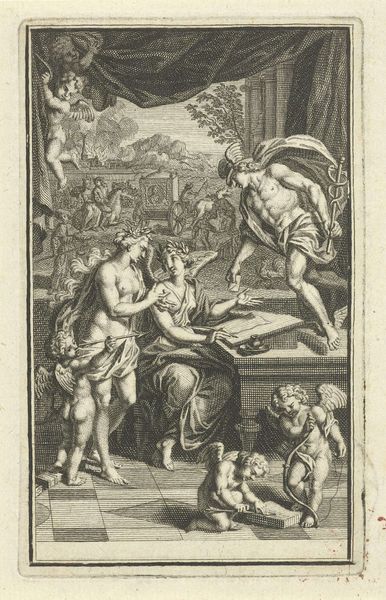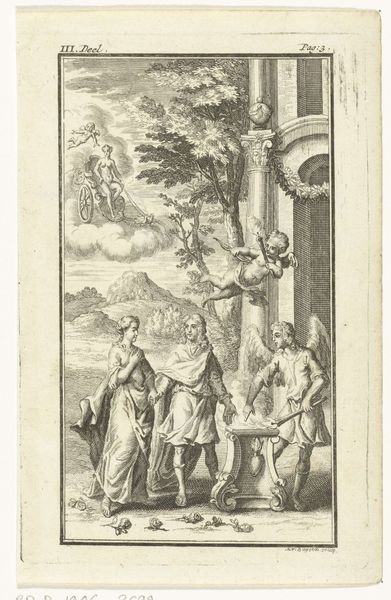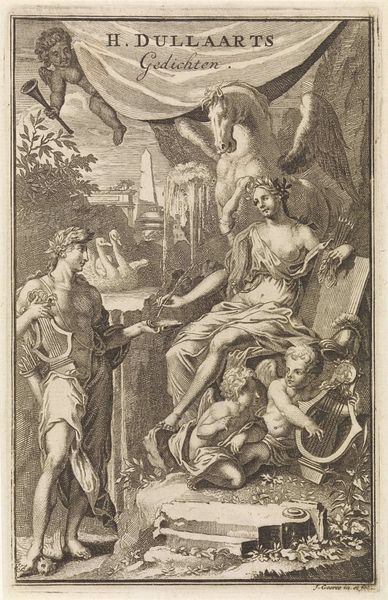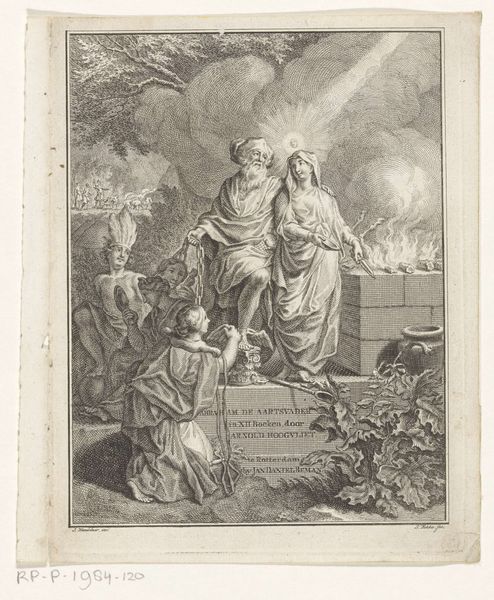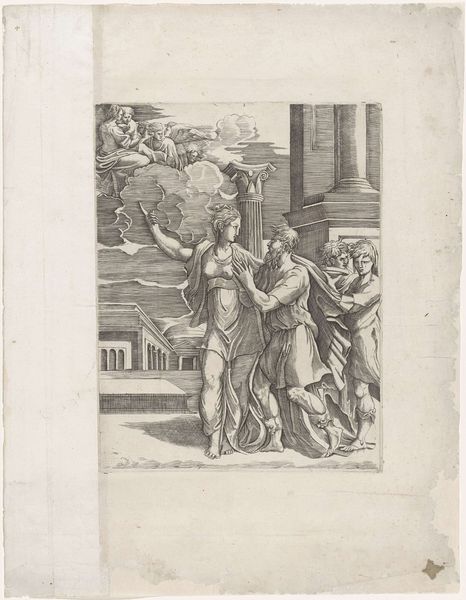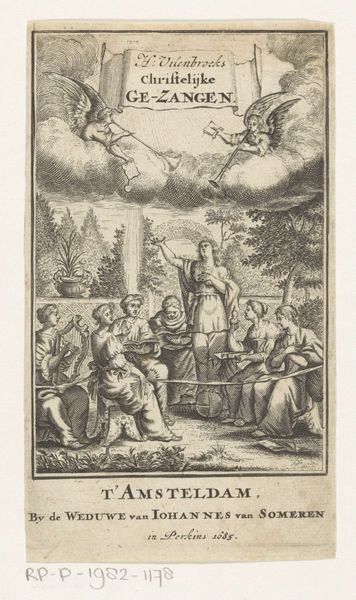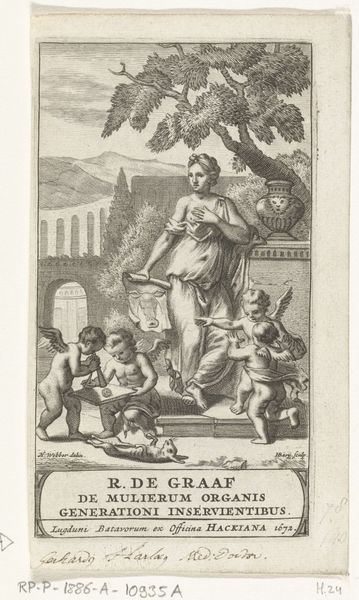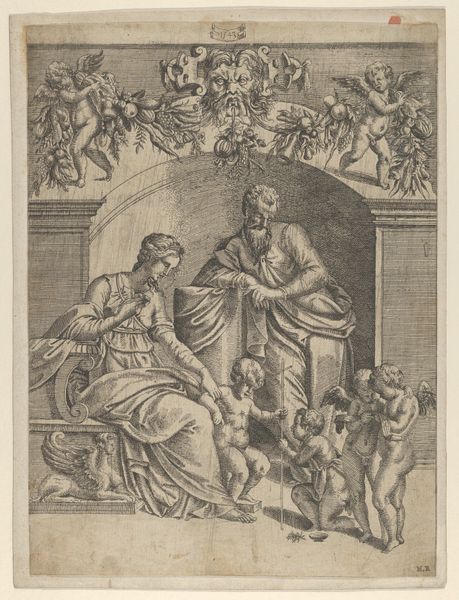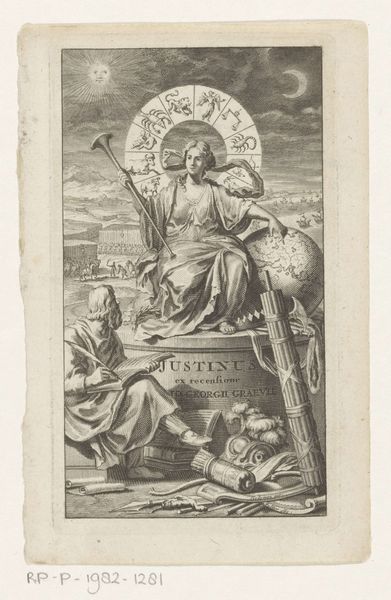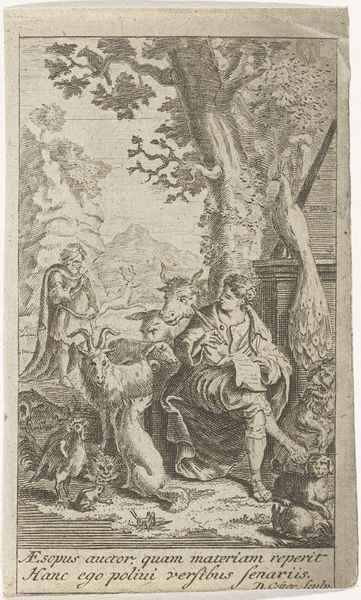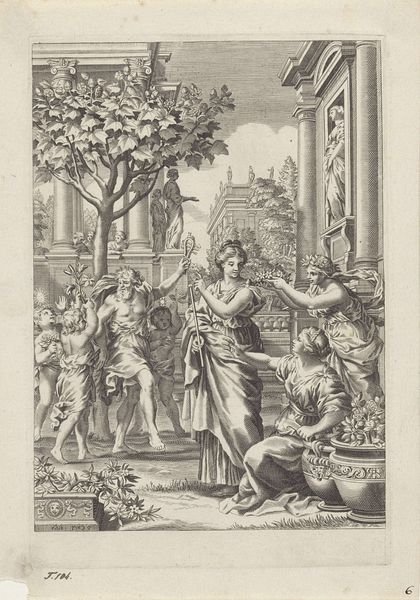
Allegorie met Apollo die schrijver Publius Terentius Afer eert 1726
0:00
0:00
pietervanicuyck
Rijksmuseum
engraving
#
allegory
#
baroque
#
pen sketch
#
old engraving style
#
figuration
#
history-painting
#
engraving
Dimensions: height 213 mm, width 167 mm
Copyright: Rijks Museum: Open Domain
Curator: Pieter van Cuyck, active in the early 18th century, crafted this engraving around 1726. The work, currently held in the Rijksmuseum, is titled "Allegory with Apollo honoring the writer Publius Terentius Afer". It looks incredibly intricate. Editor: Intricate is one word! My first thought is "dense." Look at the sheer amount of figures and architectural details crammed into this scene. Curator: Absolutely. What we're seeing here is a classical scene loaded with symbolic significance. The baroque aesthetic valued detail as a means to illustrate power, in this case both divine and earthly power of art. It uses allegory to legitimize cultural production. Editor: It does appear a bit overzealous with the iconography, but thinking of it in terms of production and cultural messaging: an engraving, by its very nature, can reproduce these images, disseminating this particular, probably politically motivated message about Terentius' legacy far and wide. Who do you imagine this work was intended for? Curator: Likely for an educated elite, given its subject matter and Latin inscription. I also suspect Cuyck aimed to legitimize artistic and intellectual pursuit within the complex power dynamics of the era. Apollo is crowning Terentius, but it speaks also to an imagined golden age. Editor: I noticed how Terentius kneels almost supplicant. It highlights labor of the hand through its means of production - a pen and then engraving - there are even hints of classical theatre visible. And while this honors labor, it does not necessarily speak about fair treatment for creative work. I bet he didn’t even mix his own inks. Curator: You’re right, there is no material equality in the landscape, but Van Cuyck offers commentary through art that intersects across class divides. Consider the broader discourse surrounding artistic patronage at the time, and its effect on contemporary debates of agency. Editor: In total, I think understanding Cuyck's process and social world offers context to understanding what might appear to us, at first glance, a mere overly detailed allegorical picture of reverence, but one steeped in cultural history. Curator: I agree, its placement within historical narratives underscores this very point - in turn asking questions on how we honor those who came before us and whose voices often get marginalized.
Comments
No comments
Be the first to comment and join the conversation on the ultimate creative platform.
